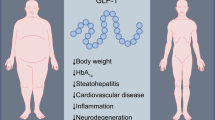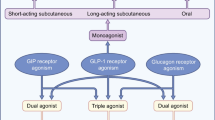Abstract
Dipeptides absorbed by the intestinal epithelium are delivered to circulation, but their metabolic roles are not yet clearly understood. We investigated the biological activities of a dietary dipeptide, H-Trp-Arg-OH (WR), on the regulation of peroxisome proliferator-activated receptor (PPAR) α activity. Reporter gene assays revealed that WR dose-dependently induced PPARα transactivation. Surface plasmon resonance experiments demonstrated that WR interacts directly with the PPARα ligand binding domain, and time-resolved fluorescence energy transfer analyses revealed recruitment of a co-activator peptide, fluorescein-PGC1α, to PPARα, confirming the direct binding of WR to PPARα and occurrence of conformational changes. WR induced cellular fatty acid uptake and the expression of PPARα response genes in fatty acid oxidation, thus reducing intracellular triglyceride accumulation in lipid-loaded hepatocytes. In conclusion, the dietary dipeptide WR activates PPARα and reduces hepatic lipid accumulation in lipid-loaded hepatocytes.




Similar content being viewed by others
References
Desvergne, B., & Wahli, W. (1999). Endocrine Reviews, 20, 649–688.
Issemann, I., & Green, S. (1990). Nature, 347, 645–650.
Berger, J., & Moller, D. E. (2002). Annual Review of Medicine, 53, 409–435.
Reddy, J. K. (2001). American Journal of Physiology. Gastrointestinal and Liver Physiology, 281, G1333–G1339.
Harano, Y., Yasui, K., Toyama, T., Nakajima, T., Mitsuyoshi, H., Mimani, M., Hirasawa, T., Itoh, Y., & Okanoue, T. (2006). Liver International, 26, 613–620.
Nakajima, T., Tanaka, N., Kanbe, H., Hara, A., Kamijo, Y., Zhang, X. W., Gonzalez, F. J., & Aoyama, T. (2009). Molecular Pharmacology, 75, 782–792.
Leone, T. C., Weinheimer, C. J., & Kelly, D. P. (1999). Proceedings of the National Academy of Sciences of the United States of America, 96, 7473–7478.
Aoyama, T., Peters, J. M., Iritani, N., Nakajima, T., Furihata, K., Hashimoto, T., & Gonzalez, F. J. (1998). The Journal of Biological Chemistry, 273, 5678–5684.
Kersten, S., Seydoux, J., Peters, J. M., Gonzalez, F. J., Desvergne, B., & Wahli, W. (1999). The Journal of Clinical Investigation, 103, 1489–1498.
Li, A. C., & Palinski, W. (2006). Annual Review of Pharmacology and Toxicology, 46, 1–39.
Motojima, K., Passilly, P., Peters, J. M., Gonzalez, F. J., & Latruffe, N. (1998). The Journal of Biological Chemistry, 273, 16710–16714.
Radwanski, E. R., & Last, R. L. (1995). The Plant Cell, 7, 921–934.
Palme, K., & Nagy, F. (2008). Cell, 133, 31–32.
Wu, G., Jaeger, L. A., Bazer, F. W., & Rhoads, J. M. (2004). The Journal of Nutritional Biochemistry, 15, 442–451.
Foley, D. W., Rajamanickam, J., Bailey, P. D., & Meredith, D. (2010). Current Computer-Aided Drug Design, 6, 68–78.
Jappar, D., Wu, S. P., Hu, Y. J., & Smith, D. E. (2010). Drug Metabolism and Disposition, 38, 1740–1746.
Santos, S., Torcato, I., & Castanho, M. A. R. B. (2012). Biopolymers, 98, 288–293.
Hoang, M. H., Houng, S. J., Jun, H. J., Lee, J. H., Choi, J. W., Kim, S. H., Kim, Y. R., & Lee, S. J. (2011). Journal of Agricultural and Food Chemistry, 59, 6798–6805.
Prior, R. L. (2003). The American Journal of Clinical Nutrition, 78, 570S–578S.
Jia, Y., Kim, J. Y., Jun, H. J., Kim, S. J., Lee, J. H., Hoang, M. H., Hwang, K. Y., Um, S. J., Chang, H. I., & Lee, S. J. (2012). Molecular Nutrition & Food Research, 56, 878–888.
Jia, Y. Y., Kim, J. Y., Jun, H. J., Kim, S. J., Lee, J. H., Hoang, M. H., Kim, H. S., Chang, H. I., Hwang, K. Y., Um, S. J., & Lee, S. J. (2013). BBA Molecular and Cell Biology of Lipids, 1831, 698–708.
Jun, H. J., Chung, M. J., Dawson, K., Rodriguez, R. L., Houng, S. J., Cho, S. Y., Jeun, J., Kim, J. Y., Kim, K. H., Park, K. W., Kim, C. T., & Lee, S. J. (2010). Food Science and Biotechnology, 19, 219–227.
Rubenstrunk, A., Hanf, R., Hum, D. W., Fruchart, J. C., & Staels, B. (2007). Biochimica et Biophysica Acta, 1771, 1065–1081.
Guan, Y. F., Zhang, Y. H., & Breyer, M. D. (2002). Drug News & Perspectives, 15, 147–154.
Neve, B. P., Fruchart, J. C., & Staels, B. (2000). Biochemical Pharmacology, 60, 1245–1250.
Kesaniemi, Y. A., & Grundy, S. M. (1984). JAMA, the Journal of the American Medical Association, 251, 2241–2246.
Martin, G., Poirier, H., Hennuyer, N., Crombie, D., Fruchart, J. C., Heyman, R. A., Besnard, P., & Auwerx, J. (2000). The Journal of Biological Chemistry, 275, 12612–12618.
Martin, G., Schoonjans, K., Lefebvre, A. M., Staels, B., & Auwerx, J. (1997). Journal of Biological Chemistry, 272, 28210–28217.
Lee, H. J., Choi, S. S., Park, M. K., An, Y. J., Seo, S. Y., Kim, M. C., Hong, S. H., Hwang, T. H., Kang, D. Y., Garber, A. J., & Kim, D. K. (2002). Biochemical and Biophysical Research Communications, 296, 293–299.
Fan, C. Y., Pan, J., Usuda, N., Yeldandi, A. V., Rao, M. S., & Reddy, J. K. (1998). The Journal of Biological Chemistry, 273, 15639–15645.
Acknowledgments
This work was supported by the National Research Foundation of Korea (NRF) grant funded by the Korea government (MSIP) (No. 2013R1A2A2A01016176), and a grant (14162MFDS973) from Ministry of Food and Drug Safety in 2014. The SPR instrument was provided by the Korea Basic Science Institute. We thank Professor Hyun-Gyu Song for the advice on FRET analysis.
Author information
Authors and Affiliations
Corresponding author
Additional information
Yaoyao Jia and Jong-Ho Kim contributed equally to this paper.
Rights and permissions
About this article
Cite this article
Jia, Y., Kim, JH., Nam, B. et al. The Dipeptide H-Trp-Arg-OH (WR) Is a PPARα Agonist and Reduces Hepatic Lipid Accumulation in Lipid-Loaded H4IIE Cells. Appl Biochem Biotechnol 175, 1211–1220 (2015). https://doi.org/10.1007/s12010-014-1302-7
Received:
Accepted:
Published:
Issue Date:
DOI: https://doi.org/10.1007/s12010-014-1302-7




